I have spent more mornings than I care to admit refreshing Rhode’s website, hoping to snag the Peptide Lip Treatment before the “Sold Out” banner reappears. Each time the cart button fades to gray, my beauty stash stays glaze‑free and my curiosity grows stronger.
Hailey Bieber, skincare icon and cultural trendsetter, has turned those sell‑outs into spectator sports. Rhode drops feel like mini pop‑culture events, complete with countdowns, influencer unboxings, and group chats buzzing with “Did you get it?” panic.
In this article, we’ll unpack how Rhode sparks that kind of demand. It’s a behind-the-scenes look at the tactics driving those rapid-fire sellouts and the mechanics that make each drop feel like an unmissable moment.
If you’re planning your next product launch and want to understand how a brand like Rhode keeps winning the drop game, this is your play-by-play.
Let’s dive in.
[[cta5]]
The Rhode Effect, in Numbers
Before we get into the how, let’s talk about what Rhode’s strategy actually does.
Because this is the kind of hype that turns limited-edition lip balm into a $10 million launch and builds a 400,000-person waitlist without a single discount code in sight.
Here’s what Rhode has pulled off since launching:
- $10M in sales during the brand’s first 11 days
- 440,000+ waitlist signups after the initial product drop
- 400,000+ waitlist for the Peptide Lip Tints alone
- 200,000+ waitlist for a phone case
- 1 million+ tubes sold of the Peptide Lip Treatment
- Drops that sell out in under an hour, sometimes in minutes
Those numbers are the result of a launch model designed to stretch attention, build pressure, and make each product feel like a cultural moment. Truly, a masterclass in beauty ecommerce strategy.
And while not every brand can borrow Hailey’s spotlight, they can borrow the structure behind it.
6 Rhode Product Drop Tactics That Keep Selling Out
Rhode’s launches feel effortless on the surface, but behind every product drop is a carefully built system. From early teasers to waitlists, influencer collaborations, and limited-time offers, each move plays a role in shaping demand and turning attention into action.
So now, let’s dissect how they do it. One tactic at a time.
- Tease Long, Drop Hard
Rhode builds anticipation long before a product page goes live. A swipe of gloss in a GRWM video, a shelfie with no tag, a quiet cameo in Hailey’s routine. Each one plants a seed. The product feels familiar by the time it launches, even without a formal introduction.
These teasers appear across platforms and build slowly. Fans notice, share, speculate, and start asking questions. The brand listens, responds with more clues, and lets curiosity grow on its own.
Then comes the drop. Clear visuals, a set release date, and a tight window between reveal and purchase. The product arrives already in demand, and shoppers move quickly.
This approach helps:
- Grow awareness in a natural, low-pressure way
- Prime your audience to care before the announcement
- Create a peak moment that turns attention into action
What to try:
- Start teasing the product at least 3–4 weeks before launch using untagged posts, texture shots, or behind-the-scenes moments
- Use organic content formats first (e.g. GRWM, unboxings, moodboards) to build curiosity without giving too much away
- Track which posts get the most DMs, saves, and speculation, then build your reveal timeline around that engagement
- Respond to early interest by gradually increasing clarity, move from hints to names, visuals, and close-ups
- Set a clear launch date in your teaser posts once engagement peaks, and keep the gap between reveal and release under one week
- Waitlists That Actually Work
At Rhode, the waitlist is more than a form. It’s the first step in the customer journey.
The brand invites people to “get on the list” early in the teasing phase. The tone is casual and welcoming. The benefit is clear: first access, inside info, and a spot in line. Once someone signs up, they begin receiving emails that feel personal, not promotional. Hailey’s voice comes through. Product education and light storytelling keep subscribers engaged without overselling.
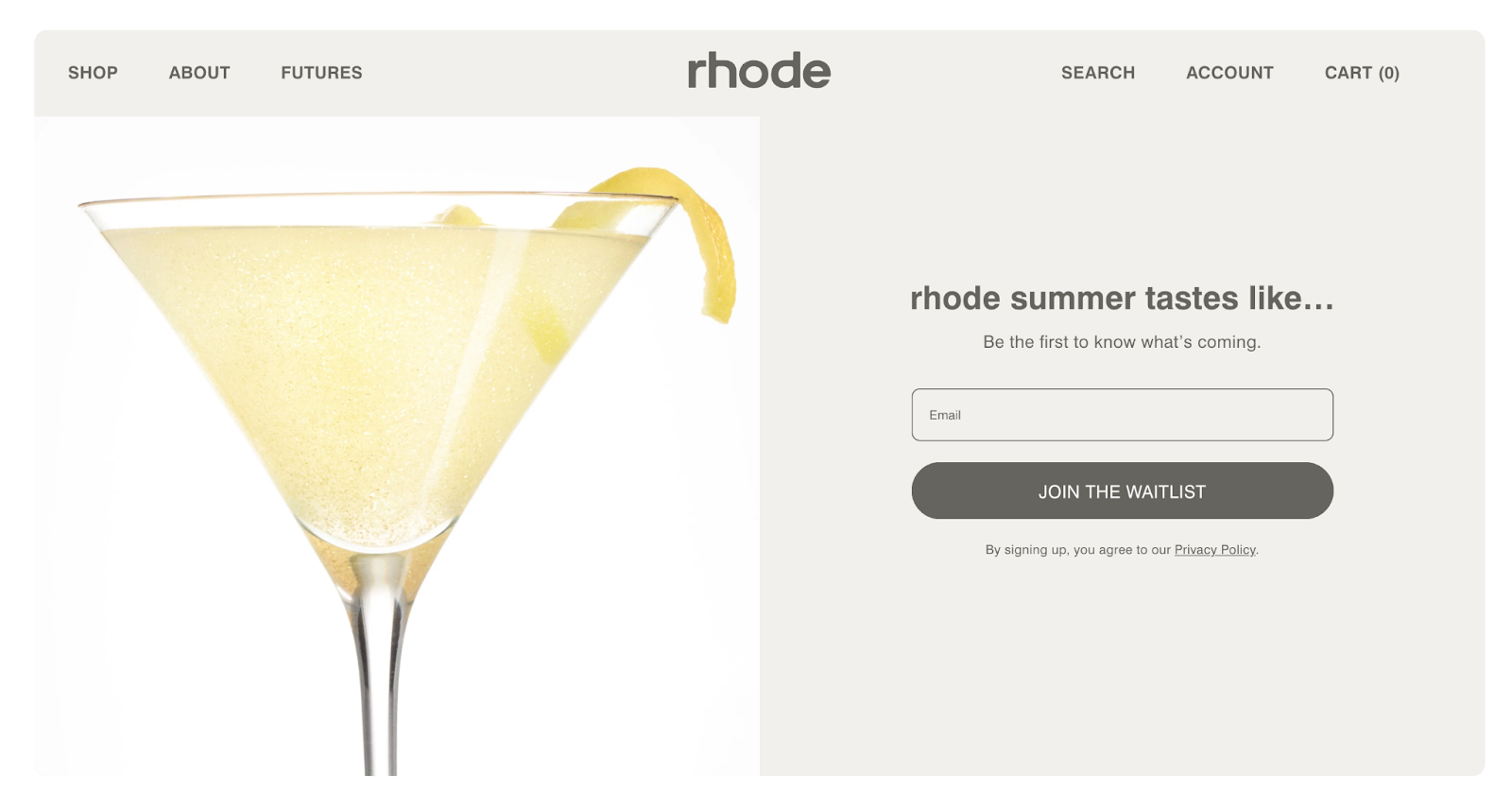
This creates a sense of inclusion. Being on the waitlist feels like being part of something unfolding in real time. It feels like a front-row seat instead of a generic newsletter sign-up.
On launch day, the list moves fast. Emails go out with sharp timing, strong creative, and copy that signals urgency without pressure. Because subscribers already feel connected, the response rate stays high.
This approach helps:
- Turn passive interest into committed attention
- Create a segment that is warm, responsive, and primed to buy
- Use email marketing for storytelling, not only for CTAs
What to try:
- Add a waitlist CTA as soon as your earliest teaser goes live, use phrasing like “Get early access” or “Be the first to know”
- Customize the confirmation email with friendly language and a preview of what’s coming (e.g. tone, ingredients, inspiration)
- Send 2–3 lead-up emails while the product is still unreleased, include behind-the-scenes photos, usage tips, or Hailey-style storytelling
- Segment your list by engagement and send early access links to the most active subscribers first
- Schedule the launch-day email for the exact drop time and follow it with a short reminder a few hours later to catch stragglers
- Scarcity Without the Gimmicks
Rhode introduces one product at a time, often in a limited shade, flavor, or format. Each drop is positioned as something worth paying attention to, with clear timing, visible sellouts, and no clutter. The language stays clean. The focus stays sharp.
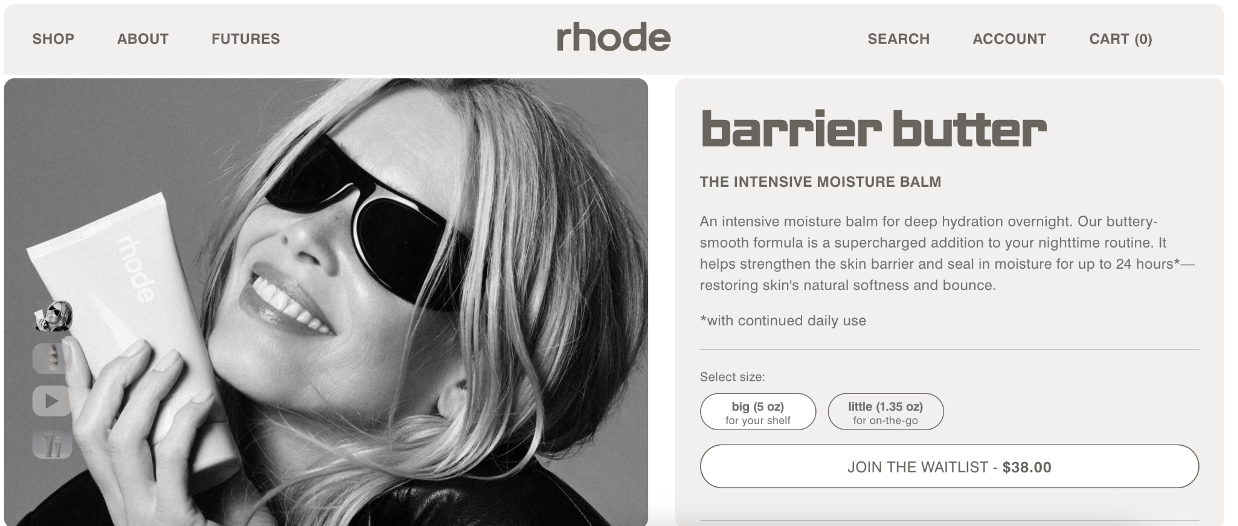
This approach creates a natural sense of urgency. Buyers know the window is short, the quantity is focused, and the restock timeline is unknown. Each product feels like a one-time opportunity, and fans treat it that way. Unboxings and “got it” posts fill social feeds within hours of launch.
Scarcity becomes part of how Rhode communicates value. The brand favors a small assortment, careful pacing, and moments that feel earned. This rhythm supports the minimalist identity and keeps demand high.
This approach helps:
- Encourage immediate action without pressure
- Keep the product mix simple, clean, and recognizable
- Reinforce the feeling that every drop is a brand moment
What to try:
- Focus each drop around one hero product or one limited variant, and highlight that focus across every channel
- Use language like “limited run,” “back by request,” or “available this week only” to set clear expectations without pushing
- Let sold-out products stay visible for up to a week with a “waitlist” button in place of the cart
- Share behind-the-scenes content that reinforces why the drop is limited (e.g. ingredient sourcing, batch size, hand-assembly)
- Space out launches by 6–10 weeks to build anticipation and give each release time to breathe
- Seeding That Sparks Real Buzz
Before Rhode drops a product, it sends it out as a part of a wave of promotional ideas designed to spark authentic buzz. No strings attached. PR boxes go to celebrities, influencers, and micro-creators across TikTok and Instagram. The goal is simple: let the right people try the product, talk about it if they like it, and share it in their own way.
The packaging always fits the story. For Strawberry Glaze, Rhode sent strawberry-shaped kits with Krispy Kreme donuts. For the birthday drop, Hailey posted bakery-themed photos with the Vanilla Cake lip treatment. These details make the content feel shareable and fun, while keeping the focus on the product.
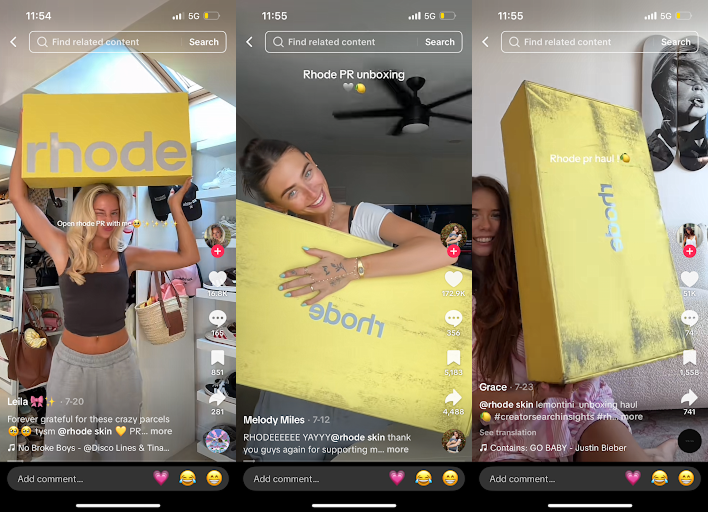
What stands out most is the tone. There’s no “please post by X date,” no sponsored energy. This creates a stream of authentic-feeling reviews, unboxings, and casual mentions. The content flows across platforms in different formats, from quick TikTok reactions to polished shelfies on Instagram.
This approach helps:
- Build organic visibility before launch day
- Create social proof that doesn’t rely on paid campaigns
- Give fans a reason to follow the product’s story in real time
What to try:
- Identify 10–50 creators across a range of follower counts who already align with your brand’s look and values
- Send out product kits 1–2 weeks before launch with no posting requirements, and include a short note that feels personal
- Design packaging that fits the product’s mood, flavor, or theme, think props, limited-edition details, or color-coded unboxing moments
- Track who shares organically and repost their content across your channels during the launch window
- Keep the momentum going by spotlighting unexpected creators (e.g. shelfies from smaller accounts or first-time buyers who tag you)
- Timing That Matches Culture, Not Calendars
Rhode times its drops to match what people are already paying attention to. Instead of relying on quarterly calendars, the brand looks to visual trends, seasonal moods, and cultural energy.
When “strawberry girl” took over TikTok, Rhode launched a strawberry-flavored lip treatment with a matching Krispy Kreme collab. Now that butter yellow is the color of the season, Rhode’s campaign visuals, packaging, and creator styling leaned into that exact shade. These details feel small but shape how the drop lands. The product becomes part of the cultural mood board, something that belongs on a feed, a shelf, and a wishlist.
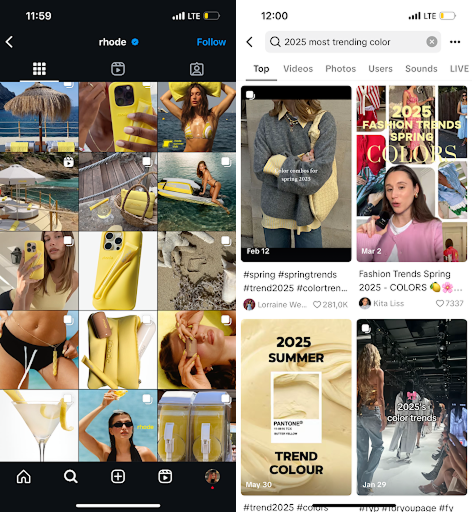
Each release comes with space to build interest. Rhode allows each drop to lead a story and sets the tone visually, emotionally, and socially.
This approach helps:
- Turn a product drop into a moment people recognize and want to join
- Align your brand with trend cycles your audience already loves
- Give your creative team a clear visual direction that feels fresh
What to try:
- Monitor trending aesthetics, shades, or moods across TikTok, Pinterest, and Instagram before planning campaign visuals
- Pick a dominant seasonal cue like butter yellow, coquette core, or glossy skin, and build your campaign story around it
- Style your creators, packaging, and promo shots to echo what’s already in your audience’s feeds
- Launch during peak trend momentum, not at the start or end, to meet people right in the scroll
- Let your creative team moodboard around culture, not content calendars, use trending visuals to guide everything from product naming to backdrop styling
- Media Coverage and Press Strategy
Rhode plans for headlines. Each product drop comes with a clear story from waitlist numbers to unexpected brand collabs, and press outlets can’t resist them.
At launch, Rhode shared that over 400,000 people signed up to buy. The media ran with the angle, and the brand gained immediate credibility. These numbers didn’t sit quietly in a press release. They became part of the hype loop.



Rhode also creates campaign moments that blend easily into lifestyle coverage. The Erewhon smoothie launch brought beauty and wellness into the same frame. The Strawberry Glaze collab with Krispy Kreme gave beauty editors a fresh angle that tied directly to Hailey’s TikTok trends. These stories helped Rhode appear everywhere at once.
The brand keeps press relationships warm by offering stats, founder interviews, and strong visuals. Beauty awards from Allure and Cosmopolitan gave editors more to cover. Hailey’s ongoing media presence through interviews, podcast clips, or trend posts keeps Rhode in the conversation without direct promotion.
This approach helps:
- Turn product drops into media moments
- Strengthen authority through coverage and awards
- Keep the brand present across multiple categories
What to try:
- Build a press-ready story around each drop, with specific data points or cultural hooks journalists can grab onto
- Pitch editors and outlets a clear angle: big waitlist, viral ingredient, record-breaking demand, or unexpected collab
- Pair product launches with crossover moments (food, wellness, fashion) to spark coverage outside typical beauty press
- Keep a press kit updated with campaign visuals, brand stats, award mentions, and founder quotes
- Share performance milestones publicly (units sold, search spikes, community reactions) to give media fresh reasons to feature you
- Align launch timelines with creator buzz or pop culture moments so earned media and social proof amplify each other
Conclusion
Rhode’s product drops work because every piece of the launch is deliberate. The teasers, the waitlists, the limited runs, the influencer buzz, the cultural timing, and the media coverage all flow together to build anticipation and make each drop feel like an event.
No, you don’t necessarily need a celebrity founder to borrow this approach (though, it helps). What matters is building a launch system that feels intentional, exclusive, and worth talking about. Tease your product like it’s already a favorite. Warm up your audience with stories and insider access. Drop it at the right cultural moment, with visuals and press angles ready to go.
A great product is the foundation. A launch strategy that feels like a moment, something people want to screenshot, share, and refresh their browser for, is what makes it sell out.
[[cta5]]


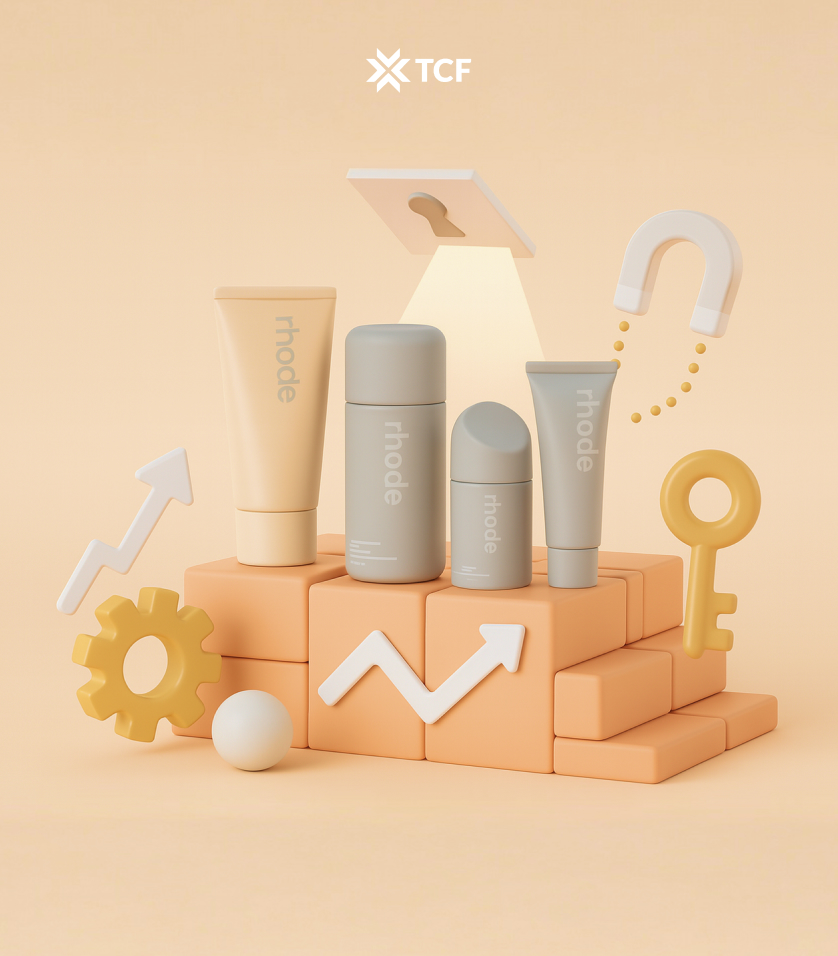



.png)
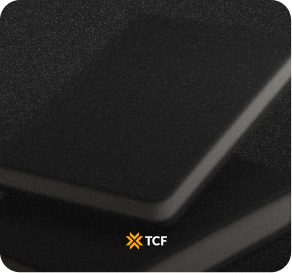

.png)




.jpg)